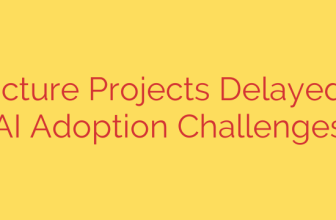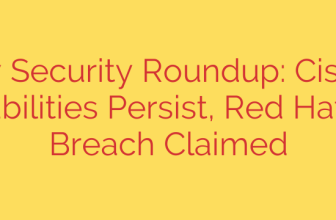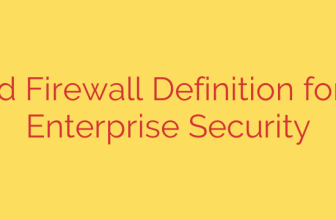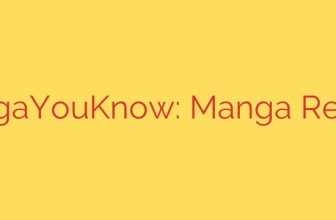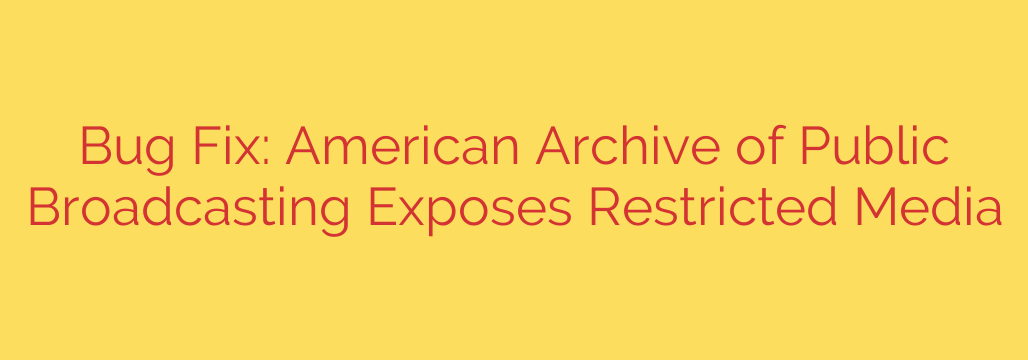
Critical Security Flaw in National Media Archive Exposed Restricted Content
Digital archives are the guardians of our collective history, preserving invaluable cultural and historical materials for future generations. We trust these institutions to not only store this content but also to control its access according to strict legal and ethical standards. However, a recently discovered security flaw in the American Archive of Public Broadcasting (AAPB) serves as a powerful reminder of the persistent challenges in securing vast digital collections.
The AAPB, a vital collaboration between the Library of Congress and Boston’s WGBH, houses over 150,000 items of historical public television and radio content. While much of this material is available to the public online, a significant portion is designated as “restricted access.” This content, often due to copyright or privacy concerns, is supposed to be viewable only by researchers physically present at the Library of Congress or WGBH.
A critical vulnerability, however, temporarily dismantled this digital wall. The flaw allowed anyone with the right technical knowledge to bypass the on-site viewing restrictions and directly access thousands of these protected media files from anywhere in the world.
The Nature of the Vulnerability
The issue stemmed from how the archive’s public-facing website communicated with its backend servers. Researchers discovered that while the user interface correctly hid the restricted content, a direct line of communication, known as an API endpoint, was left unsecured. By interacting directly with this API, it was possible to retrieve the streaming links for the entire catalog of restricted media.
This meant that unedited interviews, raw footage, and other sensitive materials intended for limited academic use were inadvertently made public. The exposure did not involve a malicious hack but was the result of a configuration error that left a secure door unlocked.
Swift Action and Responsible Disclosure
Upon discovery, the vulnerability was reported to the institutions responsible for the archive. To their credit, the archive’s administrators acted swiftly to patch the vulnerability and secure the content. Access to the exposed API was shut down, and the restricted files were once again properly protected behind the required access controls.
This incident highlights the crucial role of ethical security researchers and the importance of having a clear process for “responsible disclosure.” By reporting the flaw privately, the researchers allowed the organization to fix the problem before it could be widely exploited. This collaborative approach protected both the archive’s integrity and the sensitive content it holds.
Key Security Takeaways for Digital Institutions
This event offers important lessons for any organization managing digital assets, especially libraries, museums, and archives. Protecting digital heritage requires constant vigilance and proactive security measures.
Here are several key takeaways:
- Audit APIs Rigorously: Application Programming Interfaces (APIs) are a common weak point in web security. All APIs, especially those handling sensitive or restricted data, must be thoroughly audited and secured with the same diligence as user-facing websites.
- Implement Layered Security: Relying on a single layer of security (like hiding a link on a webpage) is insufficient. Access controls must be enforced at multiple points, including directly on the server where the data is stored.
- Encourage Responsible Disclosure: Every organization should have a clear and accessible policy for reporting security vulnerabilities. This encourages collaboration with the security community and allows flaws to be fixed before they cause significant harm.
- Assume All Endpoints Are Public: When building systems, developers should operate under the assumption that any connection point could potentially be discovered. Security should be built-in from the ground up, not added as an afterthought.
Ultimately, the successful resolution of this vulnerability demonstrates a commitment to digital stewardship. It serves as a case study not in failure, but in the ongoing and necessary cycle of identifying weaknesses, implementing fixes, and strengthening the systems that protect our shared history.
Source: https://www.bleepingcomputer.com/news/security/american-archive-of-public-broadcasting-fixes-bug-exposing-restricted-media/




